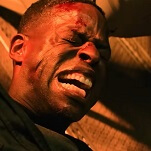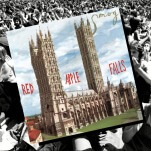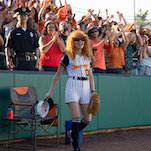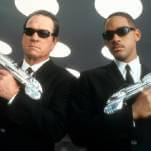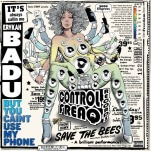Ape (1976)
Jean-Luc Godard once famously claimed that all you need to make a film is a girl and a gun. But the omission of an Asian-city-demolishing giant ape on his list of cinematic prerequisites is an unfortunate oversight in light of 1976’s Ape, the tale of a girl, a giant ape (colorfully referred to as Ape), and the Korean army that comes gunning for him. A dead ringer for a guy in a cheap ape costume, Ape is first seen on a freighter bound for Disneyland, presumably for one of the theme park’s many exhibits that allow families to taunt giant, crazed simians held in perpetual captivity. Ape isn’t about to go gently into that good night, however, and in one fell swoop, he escapes his chains, destroys the freighter, and turns it into a giant fireball. He then alternately wrestles and waltzes with a giant plastic shark before heading to Seoul. Betraying a shameful Eurocentric bias only partly excused by his limited mental capacities, Ape proceeds to overlook all the beautiful women of Korea, choosing to kidnap blonde, blue-eyed American movie star Joanna Kerns—though not before battling flaming arrows, toy trucks, and a particularly misguided battering ram. Kerns is at first annoyed at being dragged away by a giant ape right in the middle of her big rape scene, but she soon develops warm, protective feelings toward her massive captor. Nevertheless, Ape’s not-so-obscure object of desire manages to escape her 36-foot-tall suitor, leaving him free to terrorize Seoul—a process he begins, strangely enough, by peeping on a sweaty, pot-bellied American john and a Korean prostitute. But hell hath no fury like a love-struck giant ape scorned, and after demolishing Seoul, Ape reunites with the future Growing Pains star and takes her to the countryside. Like most giant monsters, however, he eventually runs out of luck, his demise leaving East Asia safe and sound, at least until the next time Godzilla, Mothra, or another King Kong wannabe decides to pay a visit.









